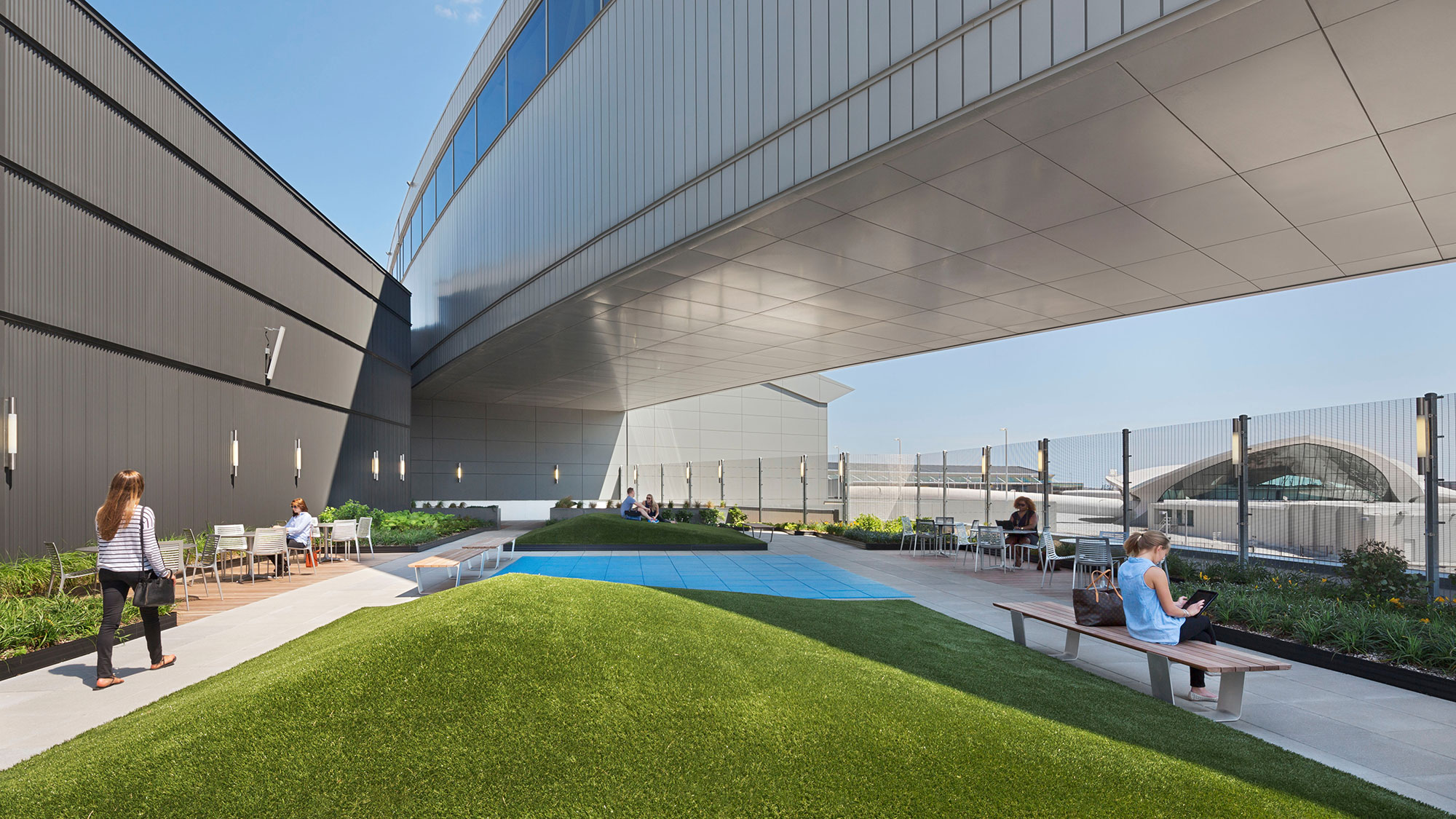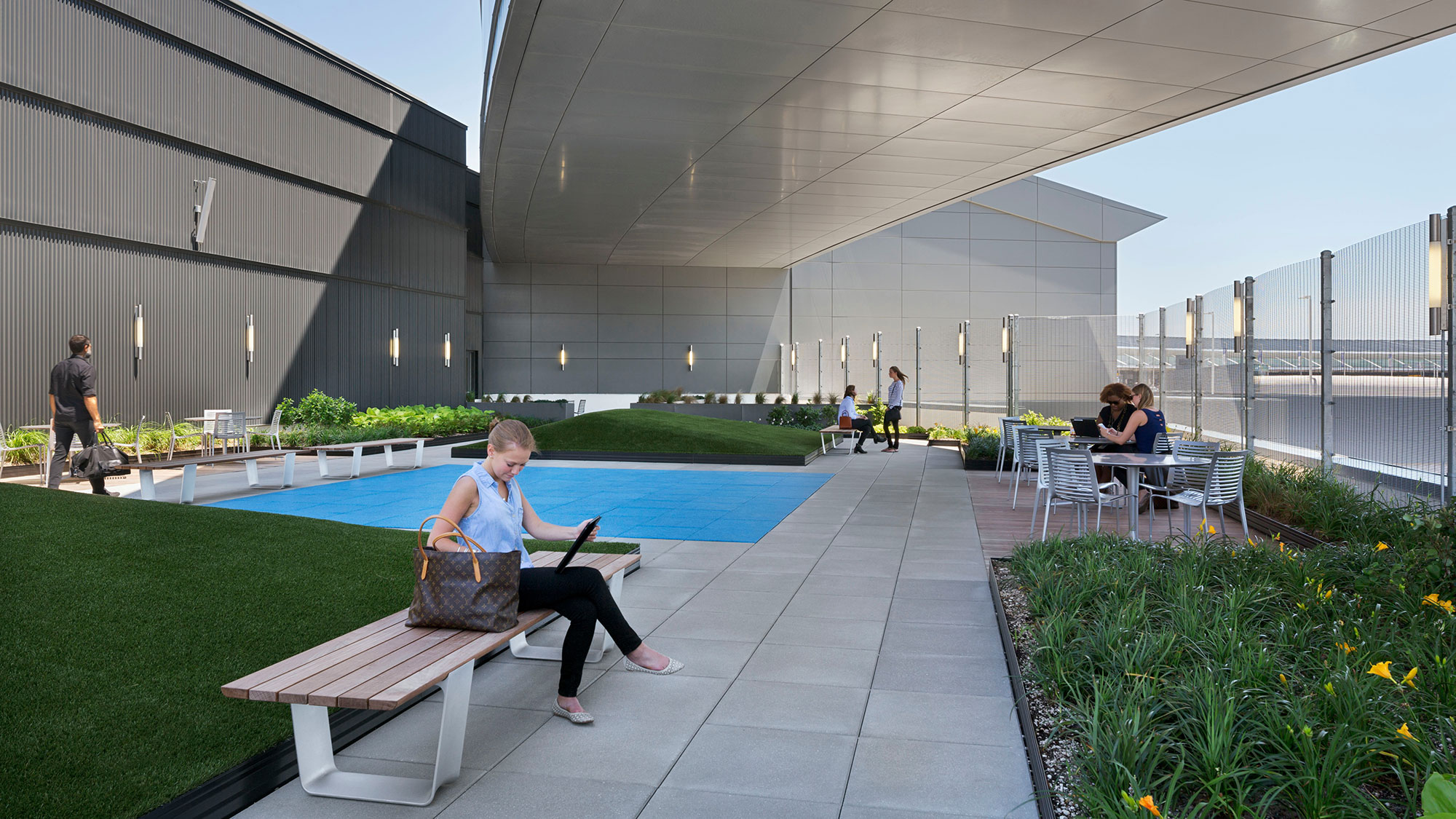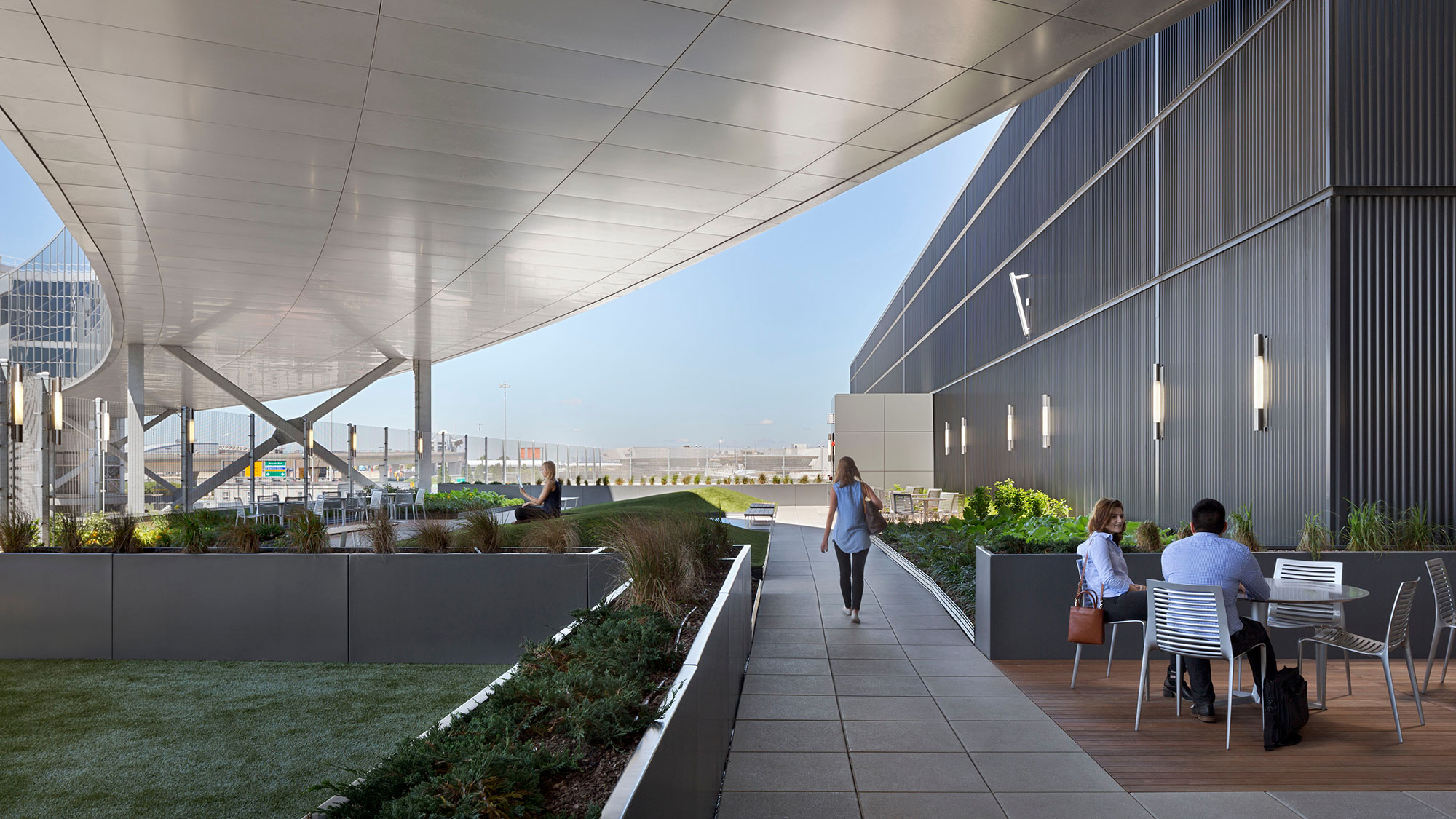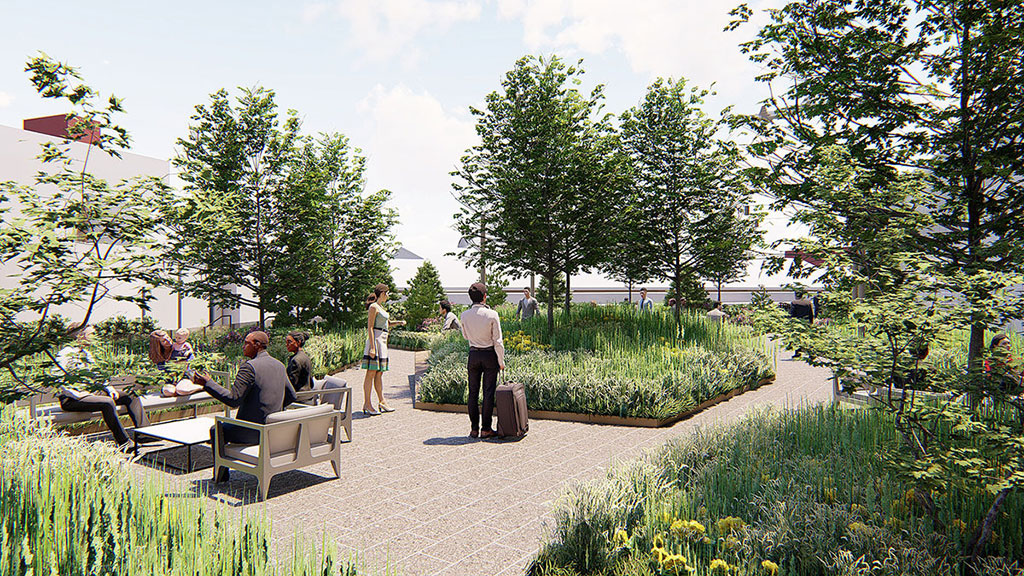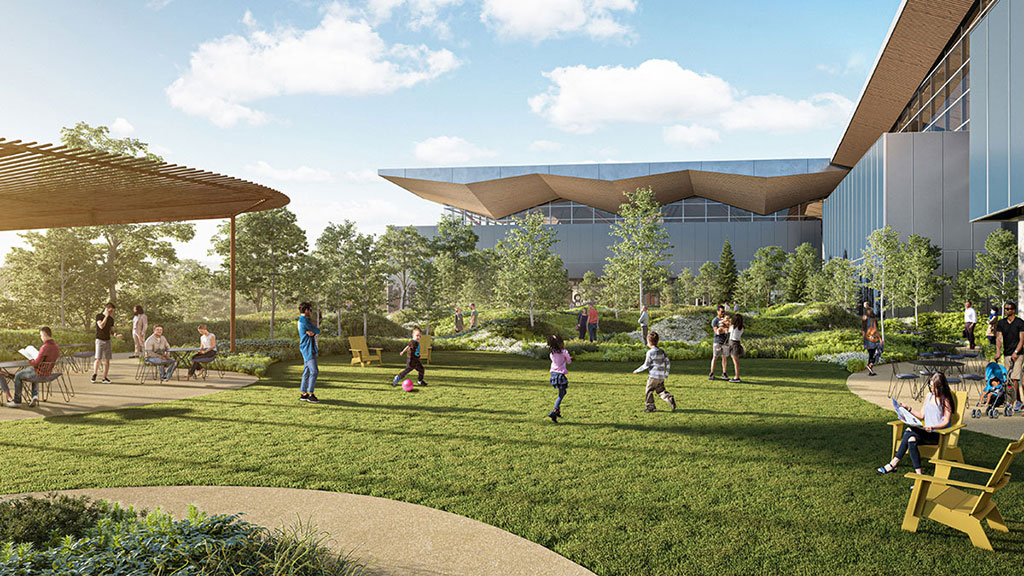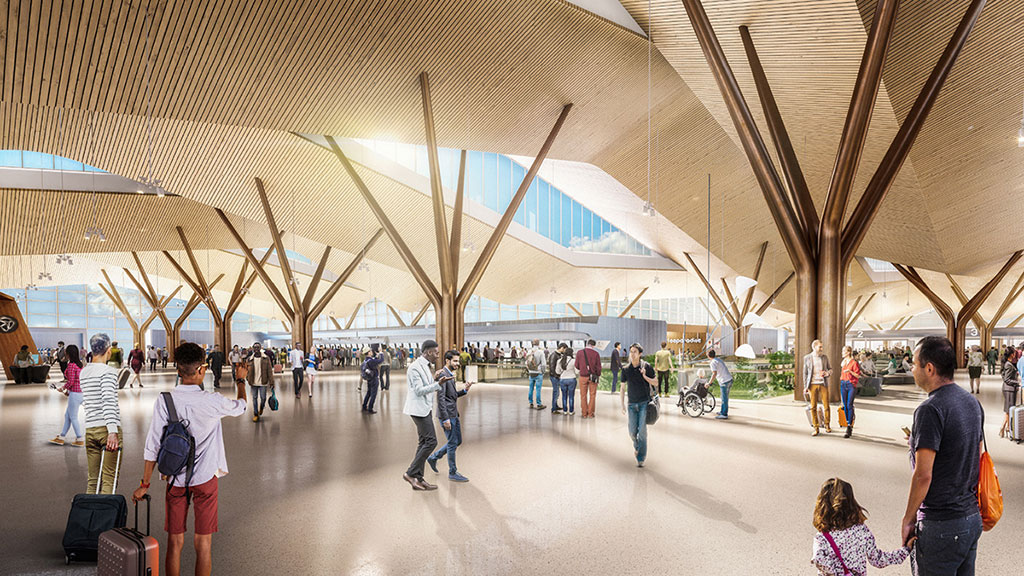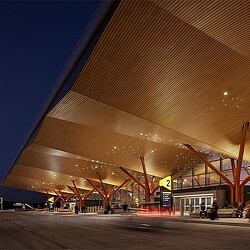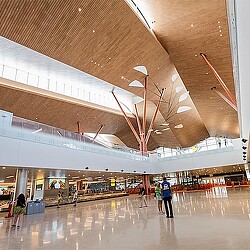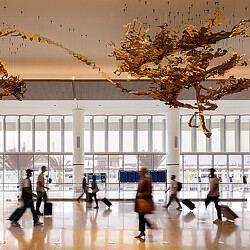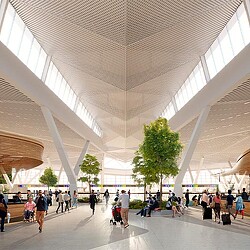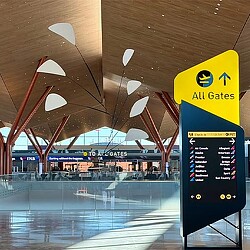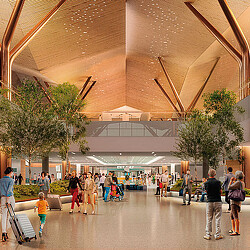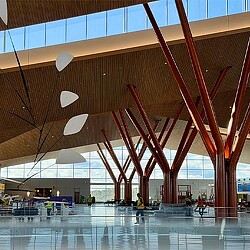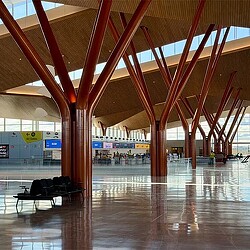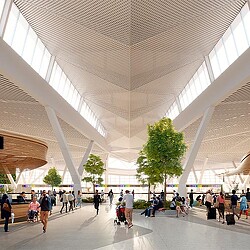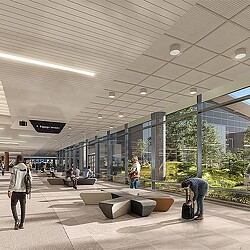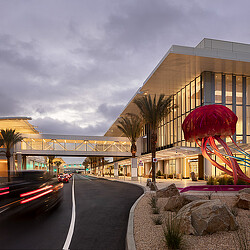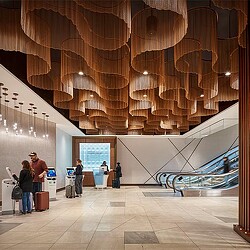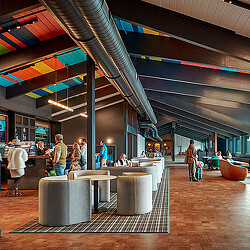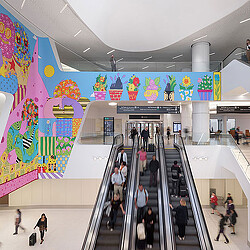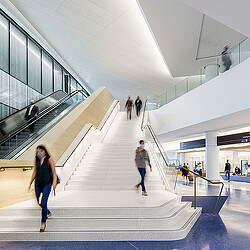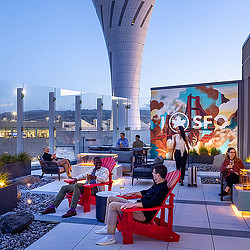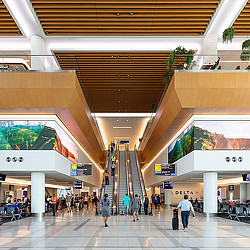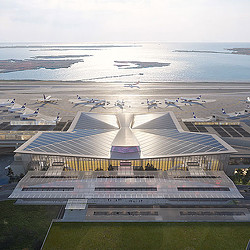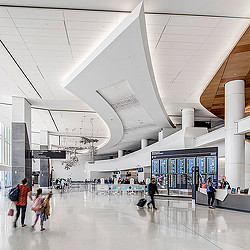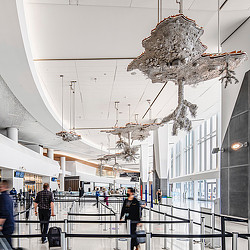The Rise of Outdoor Spaces at Airports
Major U.S. airports are actively incorporating outdoor terraces and patios as a passenger amenity — and transforming the traveler experience.
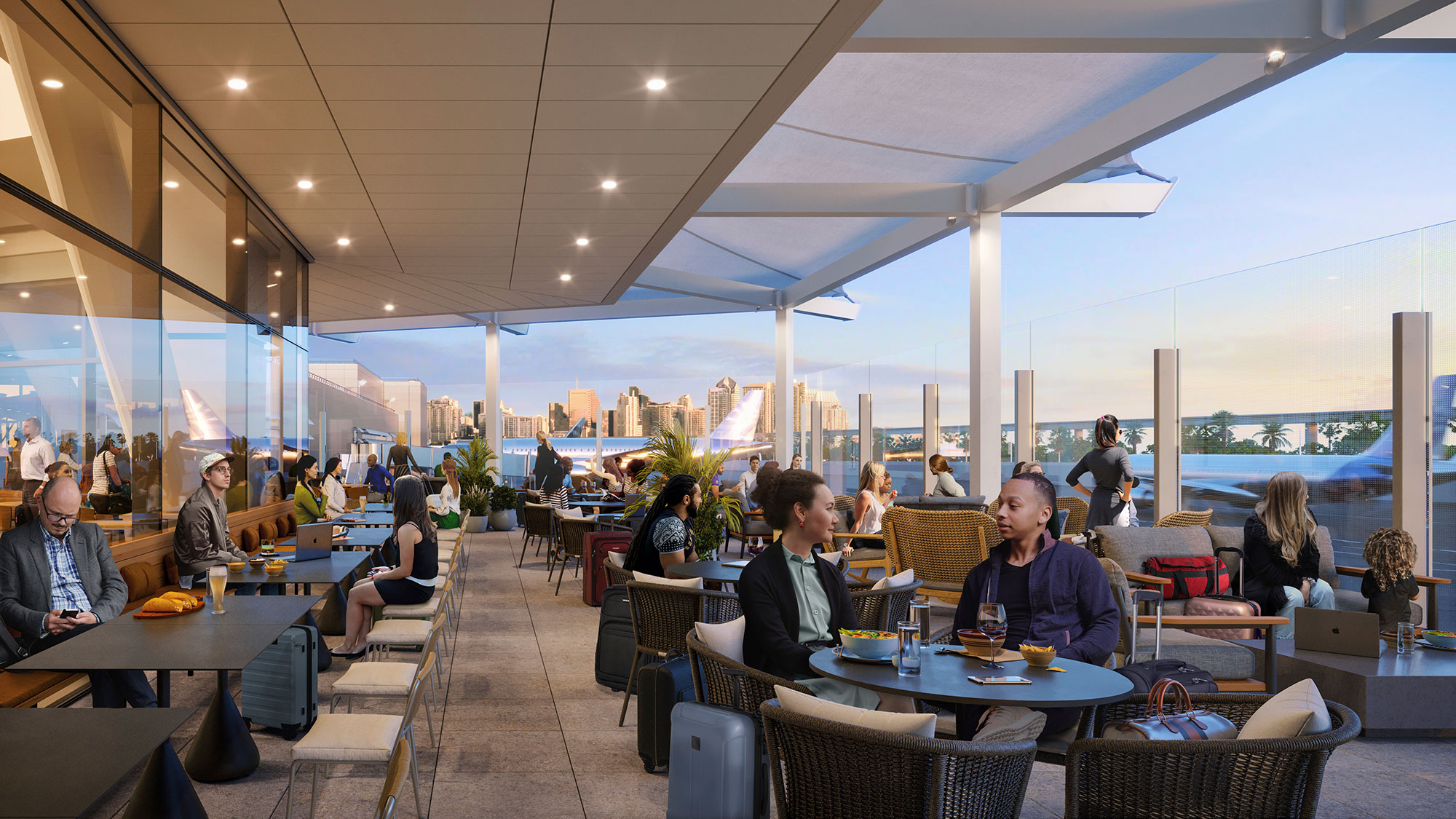
A decade ago, outdoor spaces at airports were a rarity, limited to smaller regional airports or warm-weather hubs like Palm Springs or Maui. But today, U.S. airports from coast to coast are embracing fresh-air environments as a core part of terminal design. This passenger amenity is gaining serious momentum, with major U.S. airports actively incorporating terraces and patios into their expansion plans — transforming the traveler experience along the way.
While countries like Australia and New Zealand have long embraced outdoor airport environments, particularly in airport lounges, U.S. airports are just beginning to tap into the potential of open-air terraces, rooftop lounges, and green zones. This shift has accelerated in the wake of the COVID-19 pandemic, which underscored the essential role that access to fresh air, daylight, and open space plays in supporting health and well-being. What was once considered a luxury or novelty has evolved into a new standard: outdoor environments that offer comfort, safety, and a more human-centered approach to travel.
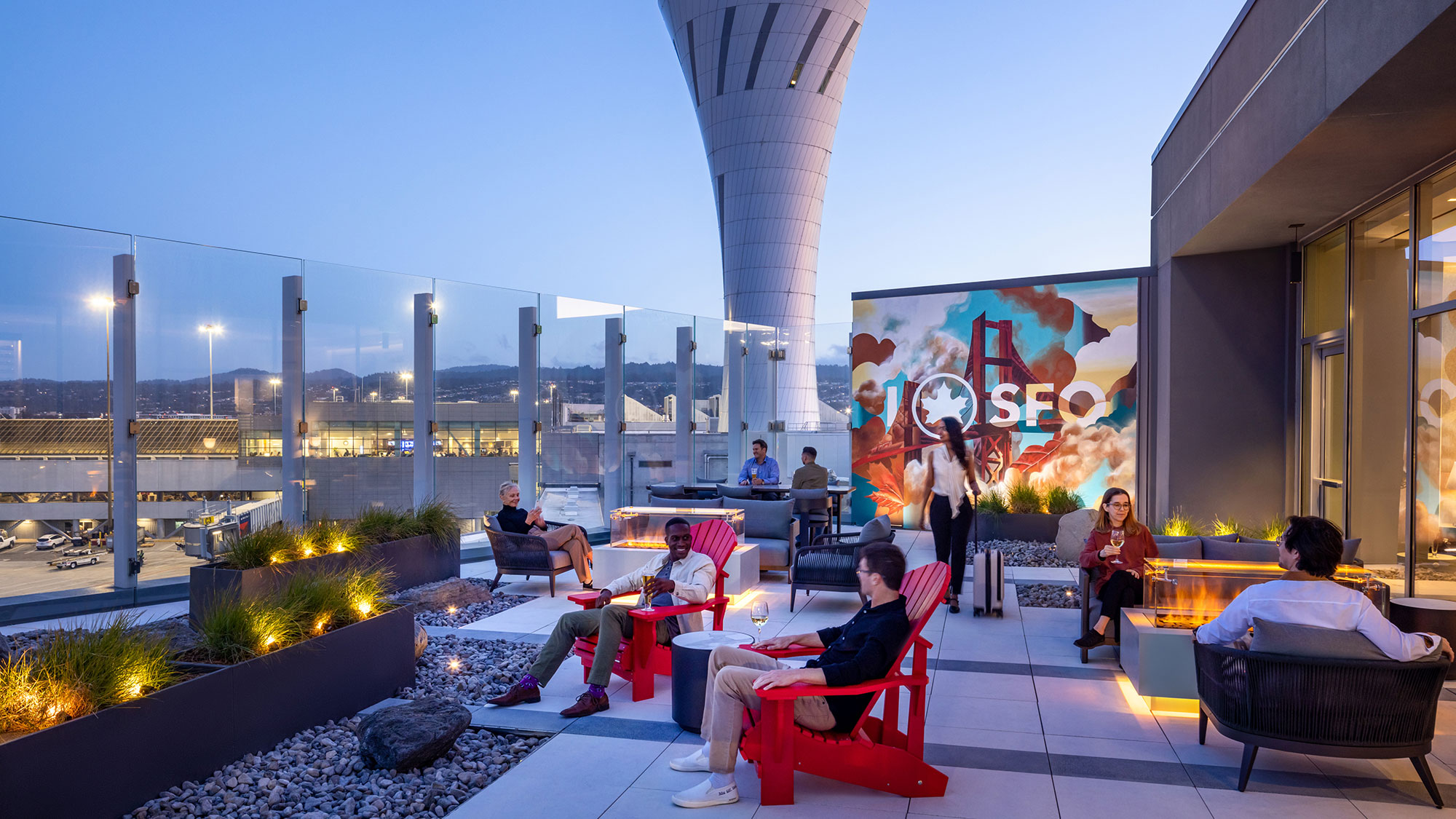
Beyond enhancing the traveler experience, outdoor spaces are proving to be operational and economic assets. These environments are not only places to relax — they’re strategic extensions of terminal functionality. Open-air lounges and observation decks can absorb traffic surges and offer flexibility during peak travel times. From a business standpoint, they unlock new revenue streams through concessions and unique branded experiences — think rooftop bars, microbrewery-inspired patios, or boutique retail. They can also improve operational resilience by functioning as a relief valve, with readily available square footage to help the airport deal with surges.
Crucially, these spaces serve as a wellness amenity for all. They address the diverse needs of today’s travelers — including those who may experience sensory sensitivities, social anxiety, or simply a desire for calm and connection to nature. Many people may not be diagnosed with neurodiverse conditions, but still benefit from predictable, quiet spaces and biophilic design elements that help reduce stress. Outdoor environments can meet these needs in a way that indoor terminals often cannot.
Transforming traditionally insular terminals into more open, engaging spaces, airports are reimagining the journey — not just as a path from point A to point B, but as a richer, healthier experience along the way.
A New Standard for Outdoor Travel Experiences
Major hubs like San Francisco International (SFO), Pittsburgh International (PIT), John F. Kennedy (JFK), and San Diego International (SAN) are redefining what it means to travel well. These airports are designing outdoor spaces that prioritize wellness, neurodiversity, and inclusivity — providing areas for decompression, connection to nature, and sensory relief. These are not just premium lounges for elite flyers; they’re integrated elements of the terminal designed to serve all passengers with a wide range of needs.
Our work with San Diego International Airport exemplifies how thoughtful design can turn outdoor space into a year-round asset. Scheduled to open this September, SAN’s 5,000-square-foot terrace will be accessible from the new terminal’s food court and will include a complimentary lounge, an outdoor restaurant, and sweeping views of the harbor, downtown, and nearby mountains. Designed for comfort and versatility, this 365-day experience includes shaded areas for hot days, lighting for foggy mornings, and fire pits and mist features that make the space inviting in every season. It’s more than a waiting area — it’s a destination that supports well-being, relaxation, and community.
Colder climates are embracing the trend too, proving that outdoor airport experiences aren’t just for sunny destinations. Airports like JFK and Pittsburgh are finding creative ways to make these spaces viable and secure, regardless of weather. At JFK’s Terminal 5i, the newly opened rooftop deck is one of the first post-security outdoor spaces in the U.S. accessible to all passengers. It includes landscaped green spaces, flexible seating, a children’s play area, and one of the nation’s first post-security pet-relief areas — blending comfort, accessibility, and family-friendly design in one elevated experience.
At Star Alliance Lounge at Charles de Gaulle Airport, a central glass structure makes up the winter garden. Blurring the line between indoors and outdoors and connecting guests to an adjacent outdoor garden.
In colder-climate airports, we’re seeing growing interest in multi-season outdoor terraces that extend the passenger experience beyond terminal walls. With thoughtful landscaping strategies that echo regional ecosystems, these spaces can reflect local identity while promoting calm and comfort for all passengers.
At Pittsburgh International Airport, four terraces — two pre-security and two post-security — are being installed to extend the passenger experience beyond the terminal walls. These outdoor gardens help break up the interior zone between check-in and security, while secured exterior courtyards offer fresh air, natural light, and flexible, adaptable amenities for travelers year-round. Designed for year-round functionality, these spaces will evoke the woodsy landscapes of western Pennsylvania with more than 20 native and adaptive plant species, including Red Maple and Quaking Aspen trees.
Ultimately, these outdoor airport environments are about giving travelers choice and control over their surroundings. From outdoor dining and musical performances to landscape vignettes and sensory-sensitive spaces, these designs acknowledge the diverse needs of today’s travelers. They’re also valuable spaces for airport staff; having access to natural daylight or taking a break outside can boost employee well-being, satisfaction, and retention.
Whether someone is looking to recharge, relax, or simply breathe in fresh air before a flight, these outdoor experiences are turning once-insular terminals into places of renewal — and setting a new standard for what airport design can achieve.
For media inquiries, email .
